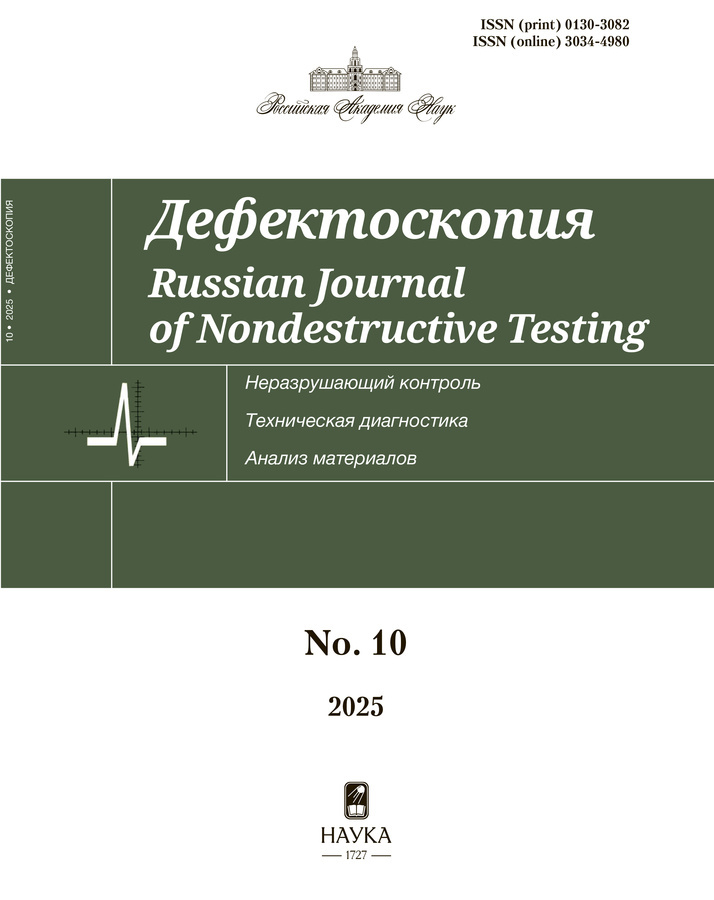Infrared Diagnostics of Turbulence in the Front of Wildland Fire and the Formation of Induced Atmospheric Turbulence
- Authors: Lutsenko A.V.1, Loboda E.L.1, Kasymov D.P.1, Agafontsev M.V.1
-
Affiliations:
- Tomsk State National Research University
- Issue: No 4 (2025)
- Pages: 42-51
- Section: Thermal methods
- URL: https://archivog.com/0130-3082/article/view/681196
- DOI: https://doi.org/10.31857/S0130308225040049
- ID: 681196
Cite item
Abstract
An infrared diagnostic of the scale of turbulence in the front of a natural fire is presented, as well as a comparison with the scale of turbulence in the air near the combustion source for a model grassland and crown fire. An analysis of the flame of a grassland fire reveals smaller turbulence scales than the flame of a crown fire. A fire-induced atmospheric turbulence at a height of 10 m is observed with the corresponding frequency of air temperature pulsation (0.1-6 Hz for a steppe fire and 0.1-3 Hz for a crown fire). The values of the structural functions of refractive index and temperature fluctuations are significantly higher than the background values and can be used for remote fire detection.
Keywords
Full Text
About the authors
A. V. Lutsenko
Tomsk State National Research University
Author for correspondence.
Email: anastas_mex_mat434@mail.ru
Russian Federation, 36, Lenin Ave., Tomsk, 634050
E. L. Loboda
Tomsk State National Research University
Email: loboda@mail.tsu.ru
Russian Federation, 36, Lenin Ave., Tomsk, 634050
D. P. Kasymov
Tomsk State National Research University
Email: denkasymov@gmail.com
Russian Federation, 36, Lenin Ave., Tomsk, 634050
M. V. Agafontsev
Tomsk State National Research University
Email: kim75mva@gmail.com
Russian Federation, 36, Lenin Ave., Tomsk, 634050
References
- Melekhov I.S. Forestry: Book for universities. M.: MGUL, 2003. 320 p.
- Grishin A.M. On the influence of negative ecological consequences of forest fires // Ecological Systems and Instruments. 2003. No. 4. P. 40—43.
- Brodsky A.K. Introduction to Biodiversity Problems: Illustrated Handbook. SPb.: SPbU Publishing, 2002. 144 p.
- Kasischke E.S., Christensen N.L., Stocks B.J. Fire, Global Warming, and the Carbon Balance of Boreal Forests // Ecological Applications. 1995. V. 5 (2). P. 437—451. https://doi.org/10.2307/1942034
- MacCracken M.C., Cess R.D., Potter G.R. Climatic effects of anthropogenic arctic aerosols and illustration of climatic feedback mechanisms with 2D climatic models // J. Geophys. Res. 1986. V. 91 (D10). P. 14445—14450. doi: 10.1029/JD091iD13p14445
- Grinko O.I., Grigorieva O.I., Grigoryev I.В. Impact of forest fires on forest ecosystem // Vestnik AGATU. 2023. V. 3 (11). P. 45—72.
- Voulgarakis A., Field R.D. Fire Influences on Atmospheric Composition, Air Quality and Climate // Curr. Pollution Rep. 2015. V. 1. P. 70—81. doi: 10.1007/s40726-015-0007-z
- Vinogradova A.A., Smirnov N.S., Korotkov V.N., Romanovskaya A.A. Forest fires in Siberia and the Far East: Emissions and atmospheric transport of black carbon to the Arctic // Atmos. Ocean. Opt. 2015. V. 28. P. 512—520.
- Sitnov S.A., Mokhov I.I., Dzhola A.V. The confluence of Siberian fires on the content of carbon monoxide in the atmosphere over the European part of Russia in the summer of 2016 // Atmos. Ocean. Opt. 2017. V. 30. P. 146—152.
- Smirnov A. P. Forest fires - 2010: causes and consequences // Supplement to the journal Life Safety. 2013. No. 11. P. 13—16.
- Zaitsev A.M., Gubsky S.V. On the issue of forest fires due to spontaneous combustion of forest litter // Bulletin of the Voronezh Institute of the State Fire Service of the Ministry of Emergency Situations of Russia. 2016. V. 4 (21). P. 22—29.
- Loboda E.L., Matvienko O.V., Vavilov V.P., Reyno V.V. Infrared thermographic evaluation of flame turbulence scale // Infrared Phys. Technol. 2015. V. 72. P. 1—7.
- Loboda E.L., Lutsenko A.V., Agafontsev M.V. Investigation of turbulence in the flame of a model fire and the appearance of induced atmospheric turbulence // Izvestiya vuzov. Fizika. 66 (4). P. 48—56. doi: 10.17223/00213411/66/4/5
- Obukhov A.M. Turbulence and dynamics of the atmosphere. L.: Gidrometeoizdat, 1988. 414 p.
- Monin A.S., Yaglom A.M. Statistical hydromechanics. Part 2. M.: Nauka, 1967. 720 p.
- Vavilov V.P. Infrared thermography and thermal control. М.: ID Spektr, 2009. 544 p.
- Vesala G.T., Ghali V.S., Naga prasanthi Y., Suresh B. Parametric study of anomaly detection models for defect detection in infrared thermography // Defectoskopiya. 2023. No. 12. P. 12—25. doi: 10.31857/S0130308223120023
- Yang H., Yan Y., Liu X., Wang H., Hou Y., Vavilov V.P. Evaluating efficiency of foreign object detection technology based on the use of passive infrared thermography // Defectoskopiya. 2024. No. 8. P. 32—41. doi: 10.31857/S0130308224080035
- Loboda E.L., Reino V.V., Agafontsev M.V. Application of thermography in the study of combustion processes. Tomsk: TSU Publishing, 2016. 80 p.
- Kasymov D.P., Agafontsev M.V., Perminov V.A. Infrared Thermographic Diagnostics of Wood Fire Resistance under Combined Thermal Effect Conditions from a Ground Fire Front and Firebrands // Defectoskopiya. 2024. No. 10. P. 51—58. doi: 10.31857/S0130308224100058
- Loboda E.L., Kasymov D. P., Agafontsev M.V., Reyno V.V., Lutsenko A.V., Staroseltseva A.A., Perminov V.V., Martynov P.S., Loboda Ya. A., Orlov K.E. Crown fire modeling and its effect on atmospheric characteristics // Atmosphere. 2022. V. 13. No. 12. P. 1—9. URL: https://www.mdpi.com/2073-4433/13/12/1982
- Loboda E.L., Kasymov D.P., Agafontsev M.V., Reino V.V., Gordeev E.V., Tarakanova V.A., Martynov P.S., Orlov K.E., Savin K.V., Dutov A.I., Loboda Y.A. Influence of small natural fires on the characteristics of the atmosphere near the burning center // Atmospheric and Ocean Optics. 2020. V. 33. No. 10. P. 818—823. doi: 10.15372/AOO20201011
- Instruction on the use of basic software “METEO 3.0” AMYA2.702.089 I1. Institute for monitoring of climatic and ecological systems SB RAS Sibanalitpribor LLC.
- Loboda E.L., Lutsenko A.V., Kasymov D.P., Agafontsev M.V., Kolesnikov I.A. Influence of a model fire on the characteristics of turbulence in the atmosphere // Atmospheric and Ocean Optics. 2023. V. 36. No. 10. P. 854—860. doi: 10.15372/AOO20231010
- Loboda E., Kasymov D., Agafontsev M., Reyno V., Gordeev Y., Tarakanova V., Martynov P., Loboda Y., Orlov K., Savin K., Dutov A. Effect of Small-Scale Wildfires on the Air Parameters near the Burning Centers // Atmosphere. 2021. V. 12. No. 1. P. 75 (1—15). doi: 10.3390/atmos12010075
Supplementary files


















